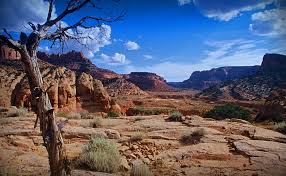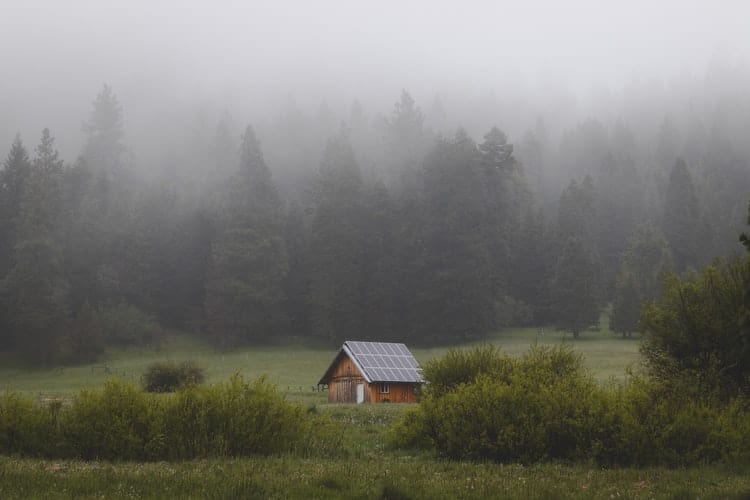
Today, more and more people search for ways to live off the grid every year. And with growing city crowds, it’s no wonder. New York packs over eight million people into about 300 square miles. That’s 27,000 people per square mile! Los Angeles alone has more than double the number of people in all of Oregon.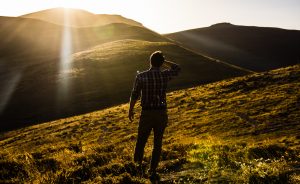
Advances in technology also help people to regain their freedom by getting off the grid. Many jobs in the modern marketplace exist online. With satellite internet, you can live anywhere and still be connected to the web and able to make money for your off the grid lifestyle.
And these two driving forces won’t be changing anytime soon: cities will remain crowded and technology will only get better. If you’ve been thinking about buying some property to make your own homestead, now is the perfect time to make the move.

Make Sure Your Needs Are Covered
Selecting a piece of land for your homestead is no easy business. Some people have dreamed of getting back to nature and fell in love with a piece of land, only to discover that the land wasn’t sufficient for their needs. If this is your first time looking at off-grid property, there are a few essential things the land must possess to be a viable place to live: water, food, and shelter. These are needs—must haves to survive.
- Water – No matter how much you love a property, you need to make sure it has a local, clean, reliable water source. That could be a nearby stream or pond. Or, you can collect rainfall in wetter environments. In many locations, it’s possible to drill a well. While it’s difficult to tell how deep a well should be before drilling, you can talk to local drillers to get an idea of how deep a well you’ll and cost of drilling.
- Food – Before you buy land for your off-grid homestead, be sure to consider where your food will come from. If you plan on growing crops, make sure the soil is suitable. If you plan to fish and hunt for food, understand the local laws for those activities. Somethings, however, may be difficult to make on your own. In those cases, living close enough to a town to stock up on supplies will be an important consideration.
- Shelter – Remember to consider the year-round weather cycles, and not just the temperature the day you see a property. For some locations with mild temperatures and low rainfall, a tent or lean-to might be all you need. However, most areas will require more protection from the elements to survive. With so many people looking to get off the grid and shed the burden of over-consumption, tiny houses are getting more popular. Here’s an inspiring story of a tiny off-grid house on a permaculture farm.

Key Features of Off-Grid Property
Some first time off gridders make one avoidable–and tragic–mistake: they fall in love with a piece of property and buy it, only to discover later it’s not a practical place to build a homestead.
Avoid this mistake by making practical matters your highest considerations. We’ve talked about food, water, and shelter already as the must-have ingredients for off-grid living. Here’s a couple of other practical consideration to keep in mind when looking at a property.
Before buying a property, look into the local laws and building restrictions. Most people want to get off the grid to get away from hassles. Don’t move into a property and then find out building restrictions prevent you from having the home of your dreams.
Make sure you have clear legal access to the property. Some parcels may look fantastic but are surrounded by private property. In such a case, you might be able to buy an easement from one of the other landowners. But you’ll save yourself a ton of headaches if you know ahead of time how you plan to get on to the property once you move in.
Also, check out the local crime rates in the area. You may want to move to a rural, uninhabited area to get away from crowds and chaos. Criminals often want to move to get away from the eye of the law. So, understanding the local crime statistics can help you decide if a property will be a safe move. Also, if you can, visit the area at night and look for anything fishy.
And speaking of safety, find out what kind of access you’ll have to medical care.
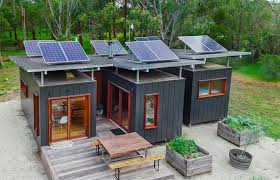
Add Some Luxury to Off-Grid Living
Beyond the necessities, be honest with yourself about what you want. If you have the budget to add all the extras and modern luxuries, you might not even notice you’re disconnected from the grid.
Practically speaking, that’s unlikely. Before you commit to off-grid living, know your limits and plan for adding the technology you want to make your life enjoyable. Here are a couple of suggestions to get you thinking.
Passive Solar Water Heating
When many people think of solar, they think of generating electricity. However, the sun does a great job of heating water, too. And it’s pretty inexpensive. Solar water heaters are really efficient, converting about 80 percent of the radiation that hits the solar tubes into hot water. They also require little maintenance. If you’re thinking of going this route, you need to really check annual weather statistics. For obvious reasons, a solar water heater doesn’t work very well in freezing temperatures.
Cell Phone Booster
Many of the properties you’ll be looking at off the grid, will be in a cell phone dead spot. A cell phone booster is the solution. There’s a range of booster on the market today. And when you need it, it can be a lifesaver.
LED Lighting
When building your homestead, consider LED lighting. Not only do they last a long, long time, but they also use very little power. That will be important since you only have to the energy you create.
Energy Sources
If you’re seriously considering living off the grid, you must already know that solar and wind provide most off-grid homes with power. However, there are two lesser-known methods to make energy you should know about.
- Micro-hydro power – As the name implies, a micro-hydro power system generates electricity from a small scale hydro generator. If the property you choose has year-round running water, this can be an easy and affordable way to produce the electricity you need.
- HomeBiogas – HomeBiogas is a product that takes your scrap food waste and converts it into cooking fuel and compost. They even offer a composting toilet with their HomeBiogas 2.0 for less than a thousand bucks! Combined, you can convert all the waste you produce into a ready fuel source to cook and provide your crops with plenty of nutrients. For the off gridder, this very well may be the coolest thing since the hand-cranked radio.
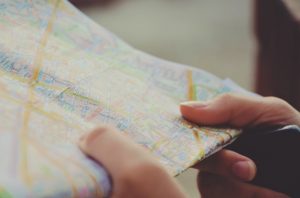
5 Things You Need When Looking at Off-the-Grid Land
Looking at raw, off-the-grid land isn’t like looking at any other kind of property. Many great properties sit far from a paved road, so it pays to come prepared. When you go to see some land you may be interested in buying, take these few essentials with you:
Off-road vehicle – Make sure whatever vehicle you use to drive to the property can handle the road to get there.
A good paper map – Don’t rely on a map on your mobile device. Many locations don’t get any reception. Keep a map handy to know where you are and where you’re going.
Have a compass – When you’re out in unfamiliar territory, knowing what direction you’re going is as important as knowing where you are.
Bring plenty of food and water – Many properties you’ll look at will be far from towns. Make sure your basic needs are met while you’re scouting out your locations for your homestead.
Bring imagination to see the potential in a piece of land – View the land with an open mind. And, remember all the practical considerations we’ve discussed. And most importantly, have fun!
You might feel overwhelmed when striking out to do something new. Let the experts at Generation Family Properties help. Our goal is to find a piece of land your family will enjoy for generations to come.
Check Out Our Latest Available Properties By Clicking Here
Contact us at 775-234-2058, and we will happily answer all your questions and provide additional information to help you decide if off the grid living is right for you.
Pictures courtesy of saeed mhmdi, Lucas Sankey, Kayla Farmer , Sylwia Bartyzel, and Fritz Bielmeier on Unsplash

